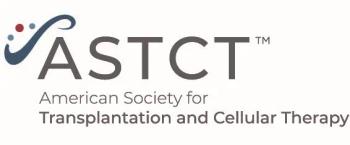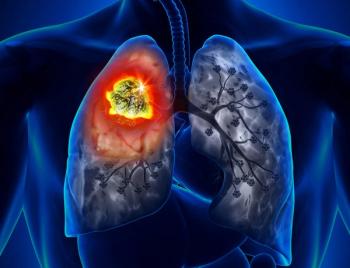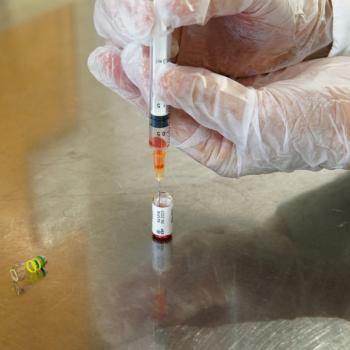
- ONCOLOGY Vol 16 No 3
- Volume 16
- Issue 3
Commentary on Abstracts #1533, #1530, #3212, #1534, #3210, #2650, #3215, #1536, and #1537
The initial experience with rituximab in chronic lymphocytic leukemia (CLL)/small lymphocytic lymphoma (SLL) was disappointing. In the first six papers, primarily including patients with relapsed and refractory SLL, there were no complete remissions, with an overall response rate of about 12%, of brief duration (McLaughlin et al: J Clin Oncol 16:2825-2833, 1998; Maloney et al: Blood 90:2188-2195, 1997; Nguyen et al: Eur J Haematol 62:76-82, 1999; Piro et al: Ann Oncol 10:655-661, 1999; Winkler et al: Blood 94:312a [abstract 1396], 1999; Foran et al: J Clin Oncol 18:317-324, 2000).
The initial experience with rituximab in chronic lymphocytic leukemia (CLL)/small lymphocytic lymphoma (SLL) was disappointing. In the first six papers, primarily including patients with relapsed and refractory SLL, there were no complete remissions, with an overall response rate of about 12%, of brief duration (McLaughlin et al: J Clin Oncol 16:2825-2833, 1998; Maloney et al: Blood 90:2188-2195, 1997; Nguyen et al: Eur J Haematol 62:76-82, 1999; Piro et al: Ann Oncol 10:655-661, 1999; Winkler et al: Blood 94:312a [abstract 1396], 1999; Foran et al: J Clin Oncol 18:317-324, 2000).
This discrepancy from the data in follicular NHL has been attributed to a lower intensity of CD20 on CLL/SLL cells, a shorter antibody half-life with increased circulating lymphocytes, perhaps the anticomplementary effects of CD55 and CD59, or other factors. Attempts to improve on these results by either escalation of the antibody dose (O’Brien et al: J Clin Oncol 19:2165-2170, 2001) or more frequent administration (Byrd et al: J Clin Oncol 19:2153-2164, 2001) induced primarily partial responses of relatively brief duration, but with considerably greater expense. Other strategies have included the up-regulation of CD20 using a variety of cytokines (Venugopal et al: Blood 92:247a[abstract 1009], 1998). However, clinical benefit from this approach has not been demonstrated.
Another strategy directed at improving the efficacy of rituximab in CLL has been to administer the antibody earlier in the course of the disease. Thomas et al (abstract #1533) treated 31 patients with early-stage CLL (Rai stage 0 to II) but with the adverse risk factor of an elevated beta-2-microglobulin level. The response rate was 90%, including 19% complete remissions and 19% nodular partial remissions, with 48% PR. A single patient progressed at a median follow-up of 8 months. Hainsworth et al (abstract #1530) treated 70 SLL or CLL patients with stage III or IV disease (although it was not clear if they were using the CLL or NHL staging systems). Responders could be retreated at 6-month intervals in an attempt at maintaining response. The response rate of 44%, including 9% CR, is comparable to the results with thrice-weekly administration (Byrd et al: J Clin Oncol 19:2153-2164, 2001).
More likely to achieve an advantage over single-agent rituximab administration than simple increases in dose intensity or density is the use of rituximab combination regimens. At ASH, Byrd et al (abstract #3212) updated their experience with a randomized phase II study in which fludarabine and rituximab were administered either concurrently or sequentially. The concurrent regimen induced a higher complete and overall response rate with promising progression-free and overall survival data, although with short follow-up. Greater neutropenia was observed with concurrent therapy, for unknown reasons. The concurrent regimen is being considered to be one arm of a phase III comparison against fludarabine, with a third arm to be determined.
Schulz et al (abstract #1534) conducted a phase II trial using a different schedule of fludarabine and rituximab in 32 previously treated and untreated patients. The overall response rate of 90% was comparable to that reported by Byrd et al in abstract #3212. Of some concern was the high rate of infections, including herpes, which appears to be a particularly common pathogen with fludarabine, either alone or especially in combination with other agents.
Randomized studies have determined that fludarabine is the single most active chemotherapy agent for the treatment of CLL. Nevertheless, a survival advantage over other regimens has been difficult to demonstrate (Rai et al: N Engl J Med 343:1750-1757, 2000). Therefore, several combinations have been developed, one of the most popular being variations of fludarabine and cyclophosphamide (O’Brien et al: J Clin Oncol 19:1414-1420, 2001; Flinn et al: Blood 96:71-75, 2000). In previously untreated patients, reported response rates are not clearly better than fludarabine alone or in combination with prednisone (O’Brien et al: J Clin Oncol 19:1414-1420, 2001; Keating et al: Blood 92:1165-1171, 1998; O’Brien et al: Blood 82:1695-1700, 1993). However, historical comparisons suggest a prolongation of time to progression. An ongoing randomized phase III study within the Eastern Cooperative Oncology Group (ECOG), CALGB, and SWOG will determine if one of the fludarabine/cyclophosphamide regimens is superior to fludarabine alone. However, at the end of that trial, the question will remain as to which of the fludarabine/cyclophosphamide regimens is most effective.
A logical next step was to add rituximab to fludarabine/cyclophosphamide. At the ASH meeting, Wierda et al (abstract #3210) updated their results with this three-drug combination. The response rate was comparable to that reported by Byrd et al (in abstract #3212) without the use of cyclophosphamide. Both regimens appear to induce higher response rates than fludarabine alone, but whether overall outcome is enhanced and which is the preferable regimen can only be determined with a comparative study.
The fludarabine/cyclophosphamide/rituximab regimen has also been used in the relapsed and refractory setting (abstract #2650, Garcia-Manero et al). Because most patients had either not received prior fludarabine or were sensitive to that agent, the response rate was high at 72% with 23% complete remissions. In striking contrast was the 7% complete remission rate and 59% overall response rate in the small cohort of fludarabine-resistant patients. Once again, it is not clear that the results with the three drugs represent an advance over fludarabine alone, fludarabine/cyclophosphamide, or even fludarabine/rituximab in this patient population (O’Brien et al: J Clin Oncol 19:1414-1420, 2001; Keating et al: Blood 92:1165-1171, 1998). Because the three-drug combination was associated with a substantial number of major infections, a randomized trial looking at progression-free survival and overall survival data is needed before adopting this program as a standard regimen.
Alemtuzumab (Campath) is a humanized anti-CD52 monoclonal antibody that has been approved by the FDA for the treatment of relapsed and refractory CLL. In the pivotal trial conducted in patients who had failed fludarabine, response rates of 33%, including 2% complete remissions, have been reported (Keating et al: Blood 94:705a[abstract 3118], 1999), compared with the 7% partial responses in relapsed patients observed with chlorambucil [Leukeran] in the Intergroup study (Rai et al: N Engl J Med 343:1750-1757, 2000). The approved schedule of alemtuzumab involves intravenous administration three times a week for 12 to 16 weeks. Major adverse events include fevers and chills, primarily during the initial week or two of therapy, with neutropenia.
Lundin et al (abstract #3215) evaluated the activity and toxicity of a more convenient subcutaneous administration schedule in previously untreated patients with CLL. The dose of antibody was escalated rapidly from 3 mg to 10 mg to 30 mg thrice weekly for 18 weeks. Of the 38 evaluable patients who had received at least 2 weeks of therapy, the response rate was 87%, including 45% complete remissions. First-dose adverse events were less severe than expected with the intravenous preparation, and primarily limited to grade 1/2 fever and injection site reactions. The most serious untoward event was grade 4 neutropenia, which occurred in 24% of patients. However, cytomegalovirus reactivation occurred in four patients, associated with fever without pneumonitis, and was responsive to gancyclovir (Cytovene). However, this method of delivery currently requires the administration of a relatively large volume of material. Yet despite the lack of comparative pharmacokinetic data, the impressively high response rate demonstrates adequate bioavailability for the subcutaneous route of administration.
The observations that rituximab has modest single-agent activity in CLL, and binds to a different target than alemtuzumab, have led several groups to combine the two antibodies, hoping for at least an additive benefit. Nabhan et al (abstract #1536) conducted a phase I trial using the standard dose of rituximab and escalating the alemtuzumab dose in cohorts from 3 mg to 10 mg and finally 30 mg, given three times per week. The combination was well tolerated, but activity was limited primarily to a reduction in circulating lymphocytes in eight patients (88%), but with no CR or PR, yet a phase II trial is being activated.
Faderl et al (abstract #1537) treated 31 heavily pretreated patients with the same two antibodies. None of the patients apparently had received either monoclonal. The response rate was 45% with a median duration of response of 7 months. Of note was that a decrease in blood lymphocytes was accomplished in all but one case, whereas reductions in bone marrow lymphocytes, liver, spleen, and node size were less common. More than half of the patients experienced an infection. The differences in response rates between these two studies may reflect the phase I nature of the Nabhan study, patient characteristics, or other facts. Further study of this promising combination is warranted.
Articles in this issue
over 23 years ago
Single-Agent Rituximab in Early-Stage Chronic Lymphocytic Leukemiaover 23 years ago
Recruitment for Trial of Adjuvant Trastuzumab Under Wayover 23 years ago
Rituximab in the Treatment of Acquired Factor VIII Inhibitorsover 23 years ago
Support for New Medicare Pay FormulaNewsletter
Stay up to date on recent advances in the multidisciplinary approach to cancer.



















































































